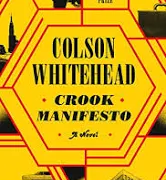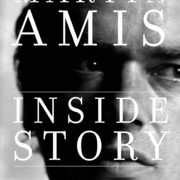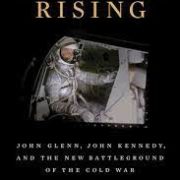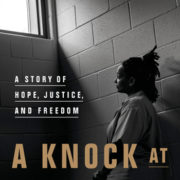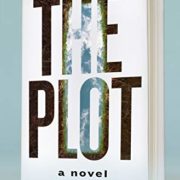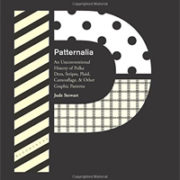A Walk in the Park: The True Story of a Spectacular Misadventure in the Grand Canyon by Kevin Fedarko
Have you ever thought about hopping into the Grand Canyon and hiking its entire length? Neither have I. Not only did Kevin Fedarko, author of A Walk in the Park: The True Story of a Spectacular Misadventure in the Grand Canyon, think about it, he actually did it. The subtitle of this compelling and thoughtful book very well could have been penned before the actual hike began. For how could an 800-mile trek by someone who is spectacularly unprepared be anything but a misadventure?
Fedarko made the excursion with photographer Pete McBride, his friend and sometimes nemesis (they bicker a lot). It’s not as though the duo were tenderfoots. Over the years, they have teamed up on numerous global adventures that became stories for publication. And prior to that, Fedarko spent many a summer within the canyon as a whitewater boatman for a Colorado River rafting company. Sounds impressive enough. However, he writes it as a marker of his inadequacies. The goal was to be a guide with a boat full of paying guests, not a boatman hauling supplies at the tail end of a rafting convoy. The fact that he was never good enough to be entrusted with piloting other humans down the river was “soul crushing.”
Over five million people a year visit the Grand Canyon. Most peer over the rim; some hike its trails or raft the Colorado. But there have been only a few dozen that we know of who have hiked its entirety. There’s no guidebook for this, of course. Such is the allure for dedicated thru-hikers who must rely on each other, from sharing route information to dropping in caches of supplies when a set of comrades are on the epic hike.
Obviously, this is not something novices just jump into. Enter Fedarko and McBride, two novices who do exactly that. They do have access to a small group of experts who will guide them. Again, they are not exactly just off-the-couch blokes. With this hike, however, they are not prepared. Not only is their gear all wrong, they are—most egregiously—commencing the hike with a “no problem” attitude.
Fedarko’s writing brings the wonders of the canyon to the reader. There are mile-deep walls where “nearly 40 percent of the planet’s chronology was etched directly into the stone.” It’s a place that has both tundra and desert conditions, where streams are almost sentient, retreating from the scorching sun and reemerging at night.
And, without a doubt, the canyon can be deadly. Aside from the dramatic cliffs that claim both casual tourists and experienced hikers alike, there’s the grinding heat. Ultimately, this is what ends Fedarko and McBride’s first attempt. Every day is a slog, notwithstanding the most breath-taking scenery imaginable. Fedarko’s feet are wrecked from all the sand that’s worked its way in. (He forgot to pack gaiters. McBride said it was for the best as he thinks wearing gaiters look goofy.) He quotes what another hiker said of such interminable days: “that hell might well consist of hiking like this for eternity.” McBride eventually experiences “water intoxication.” He’s drinking enough water, but he’s not taking in the requisite amount of electrolytes. His muscles seize and contort to the point where it looks as though there’s another living entity inside him trying to escape. It then becomes a race to escape the canyon before certain death.
Humiliated, they initially conclude that there’s no way they should try this again. But much to their surprise, another set of experienced hikers immediately reach out to educate (and scold) them. Fedarko and McBride had already learned the hard way that they just couldn’t mule their way through. They needed to (surprise) meticulously plan, become obsessive in weighing their gear so as to not schlep more than their daily exertion levels can manage.
Properly humbled, they return to the canyon with this new group of experts. The duo persevere, even tackling some segments of the canyon by themselves. At times it’s hard not to be envious of their experiences: dropping into cavernous slot canyons that very few people (if any) have explored; walking by the numerous artifacts and pictographs from prehistoric peoples; stargazing into a night sky that’s without a trace of light pollution and experiencing what astronomers call “celestial vaulting.” But then there are the recounted days where you think, “Nah, I’m good.” There are many weeks where the only water sources are various muddy potholes, some with such small apertures that the water must be extracted with a syringe. Then there are the snow-covered catwalks where one wrong step will send you to your death. And if you’re in the wrong place when a flash flood appears, forget it, you’re dead.
On the final leg of the hike, their guide made sure to take them through “Helicopter Alley.” At the western end of the canyon, helicopters ferry tourists up to the rim where they disembark for a few minutes (take a few selfies); and then they clamber aboard again, roaring back down the canyon. It’s nonstop and maddeningly loud. This, their guide tells them, is why he and the others agreed to lead these two on a thru-hike. A story about the canyon’s splendors must also include the commercial threats that undermine the canyon’s grandeur.
Towards the end of hike, McBride confesses to Fedarko that he believes he’s wasted his time snapping pictures along the way; for they can’t capture what’s probably the most powerful feature of the canyon: the quiet. I understand the sentiment. What makes the Southwest so enthralling is not just the landscape that changes hues throughout the day, but also the quiet that seems to emanate from it. It’s transcendent.
Fedarko grew up in the industrial regions of Pennsylvania, where chemical emissions poisoned both workers and residents. When he was a boy, his father gave him a copy of Colin Fletcher’s account of thru-hiking the Grand Canyon. So the Grand Canyon was—and is—the other much needed counterweight to having our way with the land. It’s both a message and a gift to future generations: There are some wild places that should remain just as they are because what they offer is already more than enough. While very few will ever undertake such a trek as Fedarko made, they should at least have the opportunity to do so and experience the same quiet and wonder.
At hike’s end, Fedarko renters the park’s trails, where people are simply walking and smiling, completely oblivious to what he has accomplished. It’s a simple yet powerful pleasure. They, too, are enjoying a walk in the park.
Reviewed by Jason Sullivan

